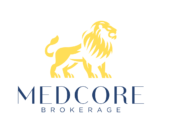Comparing Plans: Group Insurance, Self-Funded, and Level-Funded Health Plans
- May 15, 2025
- Posted by: admin
- Category: Insurance

Choosing an appropriate employee health benefits plan is essential for firms seeking to save costs while still offering adequate protection.
The three basic options, Group Insurance, Self-Funded Plans, and Level-Funded Plans, provide various advantages depending on the company’s size, financial capabilities, and willingness to take certain risks.
In this article, we will be comparing plans like Group Insurance, Self-Funded Plans, and Level-Funded Plans, and try to give a detailed overview of the plan so you can make a wise decision.
Comparing Plans: Detailed Overview Of Plans
1. Group Insurance Plans
Traditional group insurance is are fully insured type of plan where the employers pay fixed premiums to an insurance provider, whose responsibility is to take all financial risk for claims.
Pros:
- Predictable Costs: Fixed premiums every month can make budgeting very easy.
- Low Administrative Burden: The insurance provider has the responsibility to handle all the claims and compliance.
- Guaranteed Coverage: There is no unexpected hike in the prices, even if there is a large claim.
Cons:
- Higher Premiums: The insurers include the profit margins and risk buffers into the price that is charged.
- Limited Flexibility: Plan designs are standardized with very few customization options available.
- Premium Increases: The annual rate hikes are dependent upon the industry trends, rather than a claim by an individual.
Best For:
Small to mid-sized businesses (under 100 employees) seeking stability and minimal administrative work.

2. Self-Funded (Self-Insured) Plans
Employers assume direct financial responsibility for employee healthcare claims, often partnering with a Third-Party Administrator (TPA).
Pros:
- Cost Savings: Avoid paying the insurer’s profit margins, and pay only for actual claims.
- Customization: Adjust plans to employee demographics (e.g., add particular benefits or rewards).
- Cash Flow Benefits: The unused funds remain with the employer.
Cons:
- Financial Risk: High claims years may threaten the budgets.
- Administrative Complexity: It requires an in-house competency or a TPA.
- Stop-Loss Necessity: Purchasing stop-loss insurance adds cost but lowers the risk.
Best For:
Larger companies (200+ employees) with stable cash flow and risk management capabilities.
3. Level-Funded Plans
A hybrid structure that involves funding itself with group insurance. Employers pay fixed monthly amounts to cover the estimated claims, administrative costs, and stop-loss insurance.
Pros:
- Budget Predictability: Fixed payments with an expectation of a return for lower-value claims.
- Risk Protection: Stop-loss insurance coverage limits the maximum responsibility.
- Flexibility: More adjustable than group plans, and less difficult than self-funding.
Cons:
- Mid-Range Cost: More expensive than full self-funding but less expensive than group insurance.
- Carrier Dependence: It depends on the stop-loss insurer’s financial sustainability.
Best For:
Mid-sized companies having 50–200 employees are targeting cost reduction while minimizing their risks.

Key Comparison Table
| Factor | Group Insurance | Self-Funded | Level-Funded |
|---|---|---|---|
| Cost Control | Low | High | Medium |
| Financial Risk | None (carrier assumes risk) | High (employer assumes risk) | Limited (stop-loss protection) |
| Customization | Low | High | Medium |
| Administrative Effort | Low | High | Medium |
How to Choose the Right Plan
- Assess Employee Health Data: Analyze prior claims to figure out the tolerance for risks.
- Evaluate Cash Flow: It is important to make sure that you have the resources to manage the unexpected claims if you are self-funding.
- Consider Growth: Level-funded plans perform efficiently for mid-sized companies.
For expert guidance tailored to your business, consult Medcore Brokerage, the Best Employee Benefits Consultant in Texas. We specialize in delivering tailored employee benefits solutions designed to meet the unique needs of your business.
Frequently Asked Questions
What is the main difference between group insurance and self-funded plans?
Group insurance entails the payment of fixed premiums to an insurer who takes on all financial risk, whereas self-funded plans necessitate that employers directly cover employee claims, thereby assuming a greater level of risk but providing enhanced cost management.
How does stop-loss insurance work in self-funded plans?
Stop-loss insurance protects employers from catastrophic claims by reimbursing them for claims that exceed a predetermined threshold, limiting financial exposure.
Can small businesses use level-funded plans?
Yes, level-funded plans are particularly well-suited for small to mid-sized businesses (50-200 employees) that want a balance between cost predictability and risk protection.

How often should we review our benefits plan?
It is advisable to evaluate your benefits plan on an annual basis or whenever your organization undergoes substantial growth (20% or more in employee count) or experiences shifts in workforce demographics.
What factors should we consider when choosing between these plans?
Essential considerations encompass: the size of the company, its financial stability, the tolerance for risk, health data of employees, administrative capabilities, and the preferred degree of customization for the plan.
Final Thoughts
There’s no standard solution. The concept of Group coverage is very simple; self-funded plans maximize savings, and the level-funded plans strike the right combination.
Partnering with a capable broker guarantees that you choose the most suitable structure for your workforce and financial goals.

